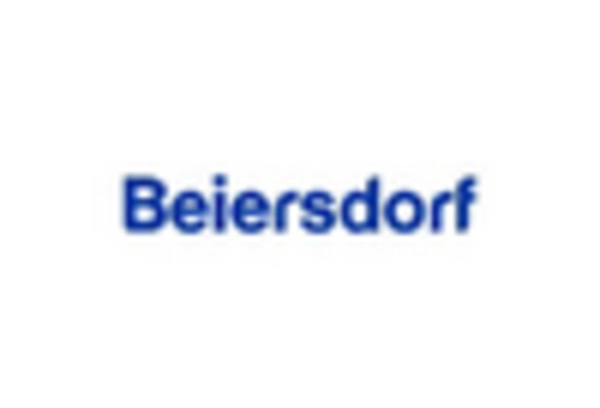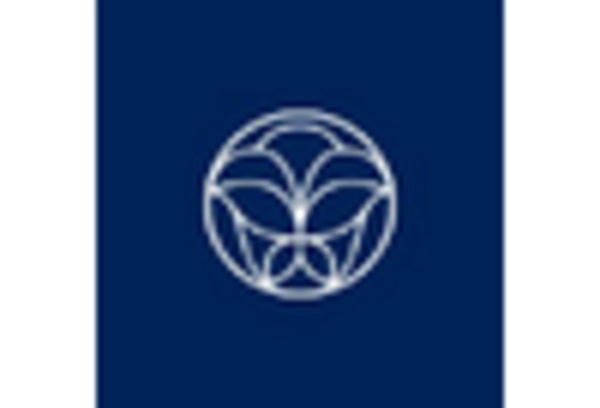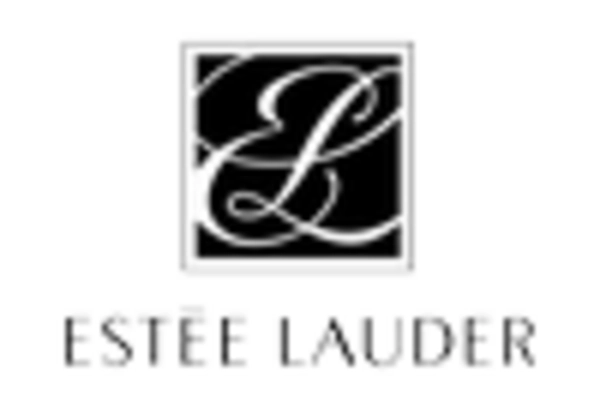Increasing Consumer Awareness
The skincare market in the UK is experiencing a notable shift as consumers become increasingly aware of the ingredients in their skincare products. This heightened awareness is driven by a growing emphasis on health and wellness, leading to a demand for transparency in product formulations. As a result, brands are compelled to disclose ingredient sourcing and efficacy, which is likely to enhance consumer trust. According to recent data, approximately 70% of UK consumers actively seek products with natural and organic ingredients, indicating a significant trend towards cleaner beauty. This shift not only influences purchasing decisions but also encourages brands to innovate and reformulate their offerings to align with consumer preferences. Consequently, the skincare market is evolving to meet these demands, fostering a competitive landscape where brands that prioritize transparency and ingredient integrity are likely to thrive.
Sustainability and Eco-Friendly Practices
Sustainability has emerged as a critical driver in the skincare market within the UK. Consumers are increasingly prioritizing eco-friendly products and brands that demonstrate a commitment to environmental responsibility. This trend is reflected in the growing demand for sustainable packaging, cruelty-free formulations, and ethically sourced ingredients. Recent surveys indicate that over 60% of UK consumers are willing to pay a premium for skincare products that are environmentally friendly. Consequently, brands are adapting their strategies to incorporate sustainable practices, which not only appeal to eco-conscious consumers but also enhance brand loyalty. The skincare market is thus witnessing a transformation as companies strive to align their operations with sustainability goals, potentially leading to a more responsible and ethical industry landscape.
Influence of Social Media and Digital Marketing
The impact of social media on the skincare market in the UK cannot be overstated. Platforms such as Instagram and TikTok have become powerful tools for brands to engage with consumers and promote their products. Influencer marketing, in particular, has gained traction, with many consumers relying on recommendations from social media personalities when making purchasing decisions. Data suggests that approximately 50% of UK consumers have purchased skincare products based on social media recommendations. This trend underscores the importance of digital marketing strategies in reaching target audiences effectively. As brands increasingly leverage social media to showcase their products and connect with consumers, the skincare market is likely to see continued growth driven by these digital engagement strategies.
Technological Advancements in Product Development
Technological innovations are playing a pivotal role in shaping the skincare market in the UK. The integration of advanced technologies such as artificial intelligence and machine learning is enabling brands to develop more effective and personalized skincare solutions. For instance, AI-driven skin analysis tools allow consumers to receive tailored product recommendations based on their unique skin types and concerns. This trend is supported by data indicating that the UK skincare market is projected to grow at a CAGR of 5.5% over the next five years, driven in part by these technological advancements. Furthermore, brands are increasingly investing in research and development to create formulations that leverage cutting-edge ingredients and delivery systems, enhancing product efficacy. As a result, the skincare market is likely to witness a surge in innovative products that cater to the evolving needs of consumers.
Aging Population and Demand for Anti-Aging Products
The demographic shift towards an aging population in the UK is significantly influencing the skincare market. As individuals age, there is a growing demand for products that address specific skin concerns associated with aging, such as wrinkles, fine lines, and loss of elasticity. This trend is supported by data indicating that the anti-aging segment of the skincare market is projected to account for over 30% of total market revenue by 2026. Brands are responding to this demand by developing targeted anti-aging formulations that incorporate advanced ingredients and technologies. Consequently, the skincare market is likely to experience robust growth as companies innovate to meet the needs of an aging consumer base, thereby shaping the future landscape of the industry.

















Leave a Comment